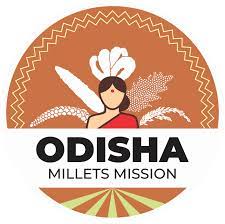 By Prof. Satya Narayan Misra* in Bhubaneswar, March 31, 2021: The Green Revolution was the unconscious hands of history to seriously affect production of millets, which grows well in arid and semi-arid environment, requiring less water than other cereal crops. Considered smart crops, they are resilient to climate stress and have nutritional advantages, being rich in fibre content, non-starch polysaccharides, with unique proteins and amino acids.
By Prof. Satya Narayan Misra* in Bhubaneswar, March 31, 2021: The Green Revolution was the unconscious hands of history to seriously affect production of millets, which grows well in arid and semi-arid environment, requiring less water than other cereal crops. Considered smart crops, they are resilient to climate stress and have nutritional advantages, being rich in fibre content, non-starch polysaccharides, with unique proteins and amino acids.
The tribal areas of Odisha, which are drought prone and have a high incidence of people who are extremely poor, with millets as their staple diet, witnessed a precipitous fall in area under production under ragi from 2.48 lakh hectares in 1991 to 1.83 lakh hectares in 2017 (35%). As if this was not enough, the yield per hectare also declined from 10.23 quintal per hectare to 8.98 hectare by 2017(14%).
This is when the Odisha government as part of their empathetic inclusive vision of growth launched the Millet Mission, which integrates production, processing, consumption and marketing as a holistic development model of best agricultural practice. The Odisha Millet Mission (OMM) aims at increasing millet productivity through improved agronomic practices, organic inputs and maximizing availability of local variety seeds, strengthen farmer cooperatives/farmer producer’s organizations for better marketing of millets, setting up panchayat and block-level processing units for increasing household consumption.
It also seeks to include millets in other nutritional programs such as Integrated Child Development Services (ICDS), Mid-Day Meal (MDM). With the budgetary provisions of Rs.300.13 crore for procurement and inclusion of millets in ICDS, MDM, and Public Distribution System (PDS), the project also aims to reach five million directly within three years which would generate bulk demand for farmers and ensure that millets are part of the local diet. It also planned awareness campaigns, cooking events, food festivals are conducted at the village, GP, block, district, and state levels to create awareness and demand for millets.
OMM is highly successful as it has already exceeded its targets and is currently being implemented in 72 blocks spread across 14 districts with 51,045 farmers. Already in 2019, finger millet, locally known as mandia was distributed to 1.6 million households via the PDS. The success of OMM program is primarily due to the efficient participation of different stakeholders.
Incidentally, the partners of OMM are knowledge creators like Indian Institute of Millets Research, The Nabakrushna Choudhury Centre for Development Studies, The University of Cambridge, Central Food Technological Research Institute (CFTRI), International Agencies like United Nation’s World Food Program (WFP), Food and Agricultural Organisation ( FAO).
The State Government consulted various stakeholders from different backgrounds including local level NGOs for strategy formulation and implementation. The efficient set of NGOs and the government’s Participatory Multi-Stakeholder Consultative Approach really worked well. Participatory Multi-Stakeholder Consultative Approach (PMSCA) of the state brought together key state and central government departments, academic and policy-development institutions, activists, farmer collectives, and development NGOs.
Through this approach, in each block an NGO was chosen as the implementing partner to ensure the seamless working of supply-chain processes from farm to plate. This approach works well as Odisha has a decentralized approach to PDS where grains are procured, processed, and distributed within the district.
 Focusing rural and urban consumers to bring millet in their plate became successful as millet dishes have been repositioned according to traditional Odia dishes and western dishes like soup, cutlet, etc. through different government-sponsored fairs and with the diligent efforts of different small start-ups and rural entrepreneurs/cooperatives. In the era of the climate crisis, Participatory Multi-Stakeholder Consultative Approach (PMSCA) can be a game-changer for sustainable development.
Focusing rural and urban consumers to bring millet in their plate became successful as millet dishes have been repositioned according to traditional Odia dishes and western dishes like soup, cutlet, etc. through different government-sponsored fairs and with the diligent efforts of different small start-ups and rural entrepreneurs/cooperatives. In the era of the climate crisis, Participatory Multi-Stakeholder Consultative Approach (PMSCA) can be a game-changer for sustainable development.
From 29 blocks and seven districts cultivating only 5182 hectares in 2017-18 the Mission now encompasses 76 blocks and 14 districts with one lakh farmers cultivating millets in 50000 hectares. While 76% of procurement is for Mandia, the yield has increased from 5.8 quintals to 12.7 quintals by 2021. The Mission is also promoting consumption among preschool children by introducing Mandia ladoos as part of their morning snacks in districts of Keonjhar and Sundergarh.
These dietary interventions for pre schooling children in the Angawadi Centres and for pregnant and lactating mothers is timely as Odisha’s record in terms of stunting amongst children and anemia amongst adolescent girls and mothers in the age group of (15-49) is rather dismal.
As per the NFHS V Survey (2020), the percentage of children who are stunted is 29.2 and girls/women suffering from anemia are 47.6%. Besides as per the report released by the NITI Ayog Odisha is still miles away from the Zero Poverty & No Hunger Target of SDG by 2025, with 32.5% below poverty line and 35.9% multi dimensionally deprived in terms of health, education and standard of living.
Once the political guru of Gandhiji, Gopal Krishna Gokhale had famously observed ‘What Bengal thinks today, India thinks tomorrow.’ Mrs Nirmala Sitaraman , our FM taking a cue from the giant stride that Odisha has taken in nurturing the Millet Mission and has declared 2023 as the ‘International Year of Millets’.
She assured in the budget speech that ‘support will be provided for post-harvest value addition, enhancing domestic consumption and for branding millet products nationally and internationally’. India is the largest producer of millets in the world.
Odisha indeed has led the way in this New Green Revolution. Jeffrey Sachs, the prime mover of SDG has observed in his latest book ‘Ages of Globalization’ that the future of development programs will not be ‘government led’, but society led, where NGOs, Corporate, academia will collaborate with the government for successful fruition of SDG targets.
On its Foundation Day Odisha deserves to be complimented for being the torch bearer of OMC and holding a template for other states to emulate. It has also brought out how the three challenges of poverty, malnutrition and harsh terrain can be surmounted by political vision& productivity improved through the collaborative effort of all stake holders.
* Dean, KIIT School of Management


Leave a Reply
Be the First to Comment!